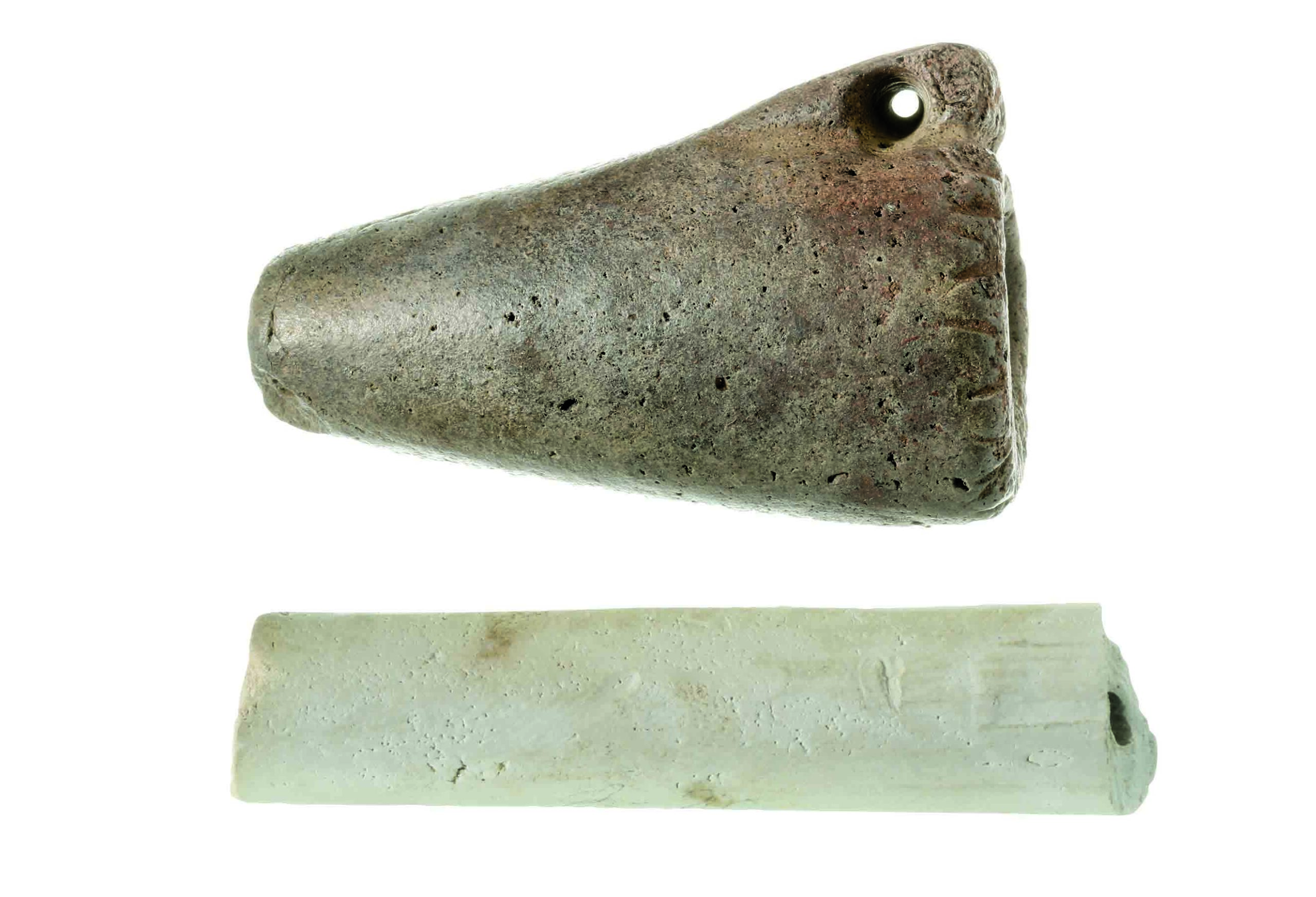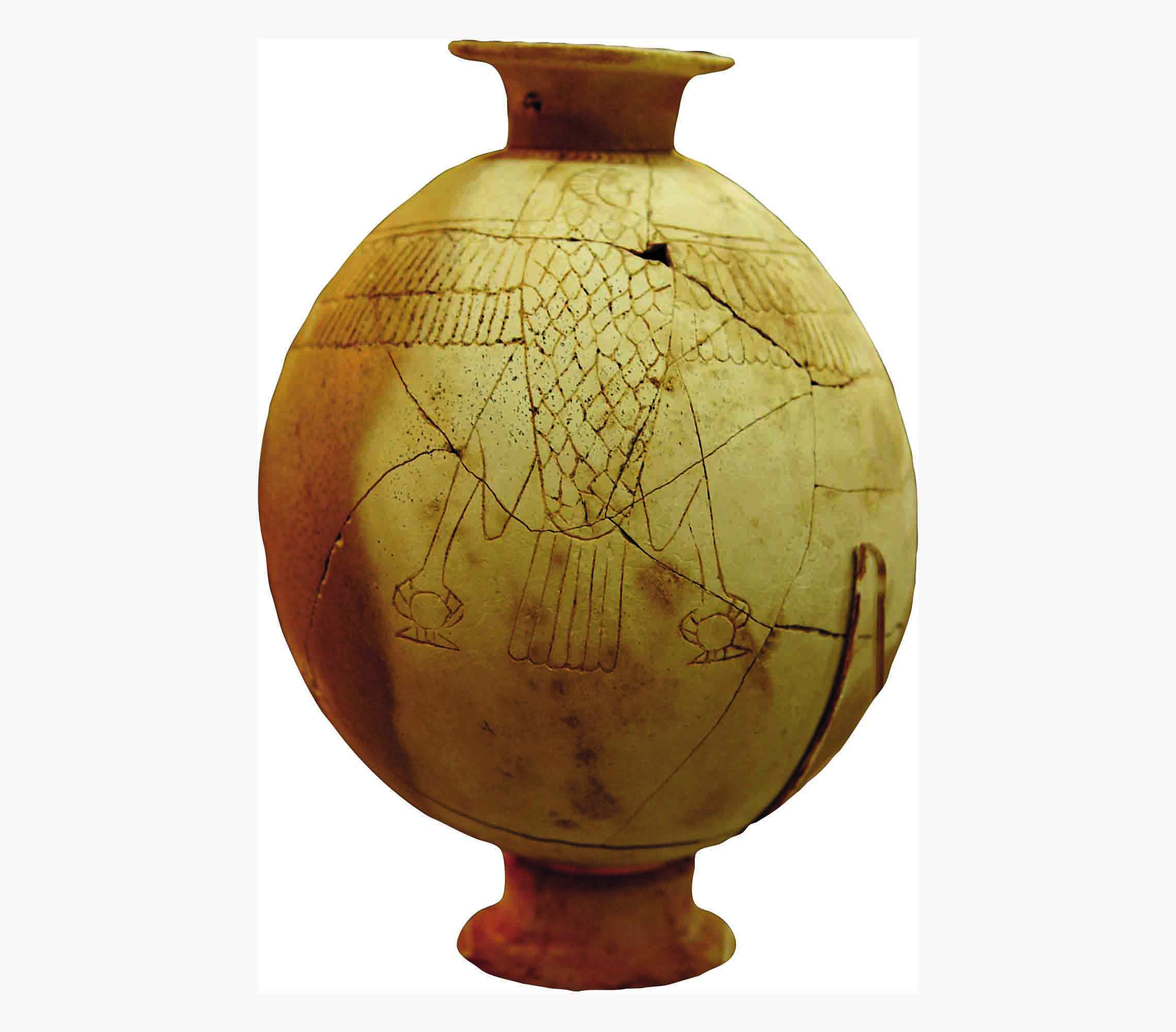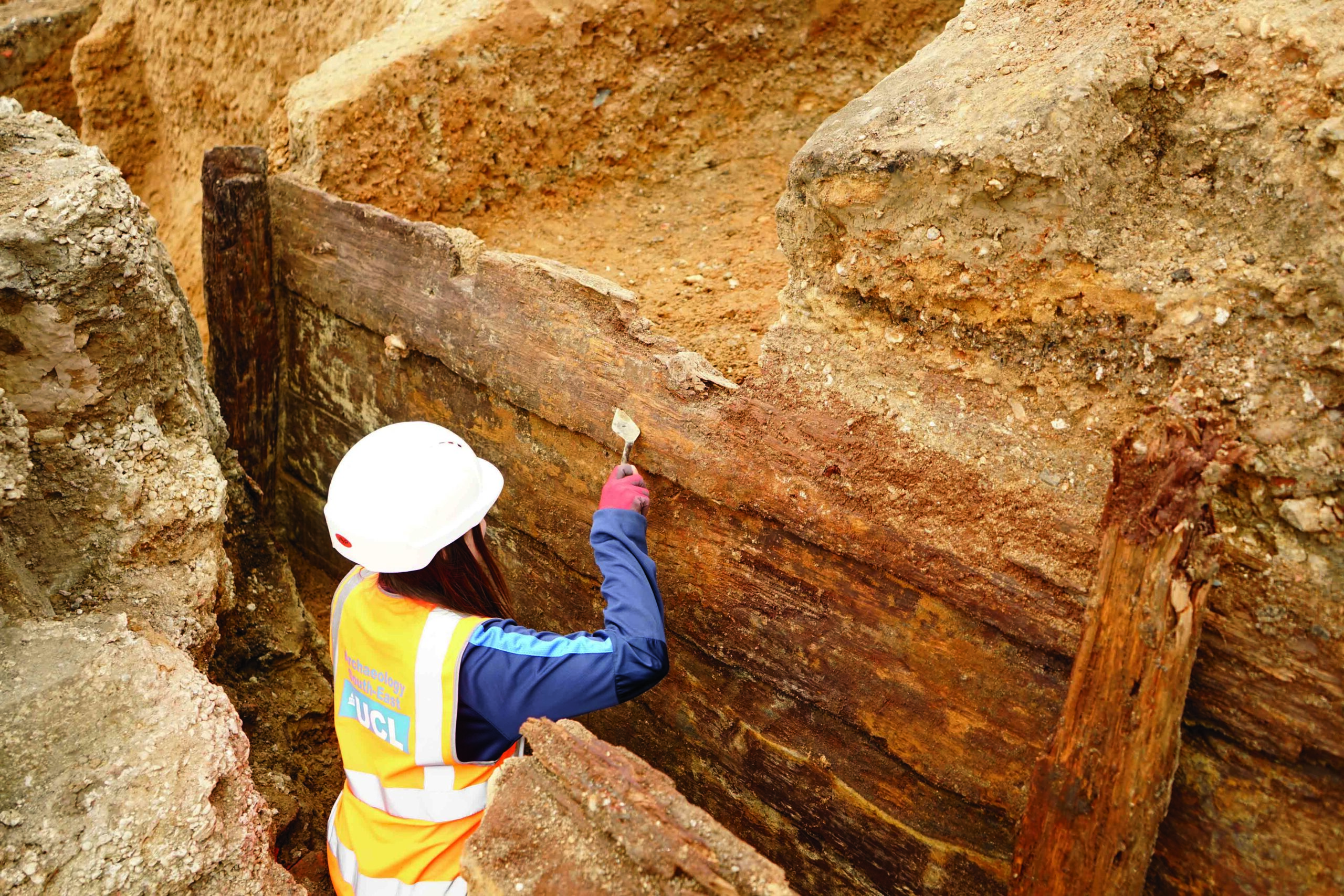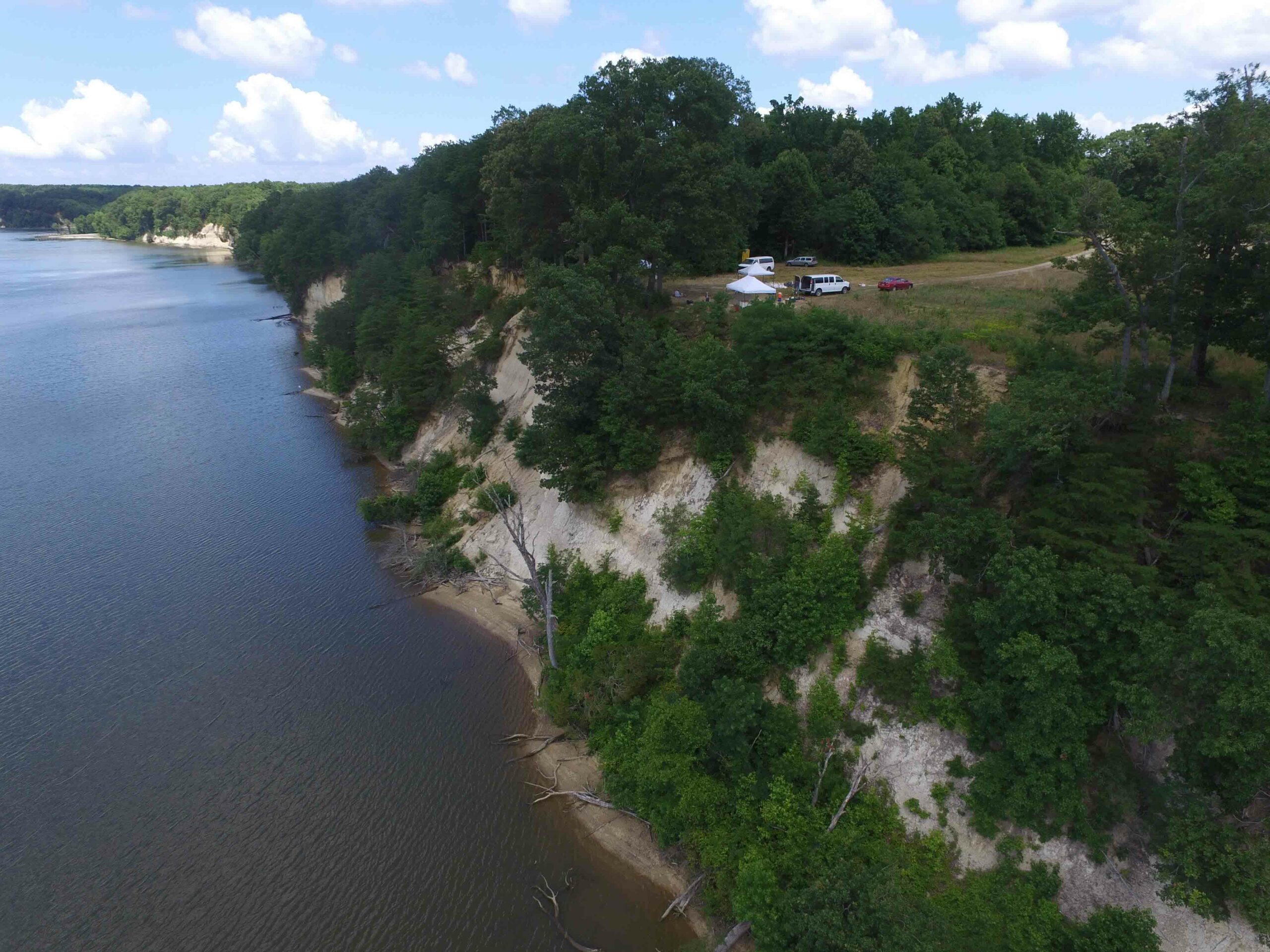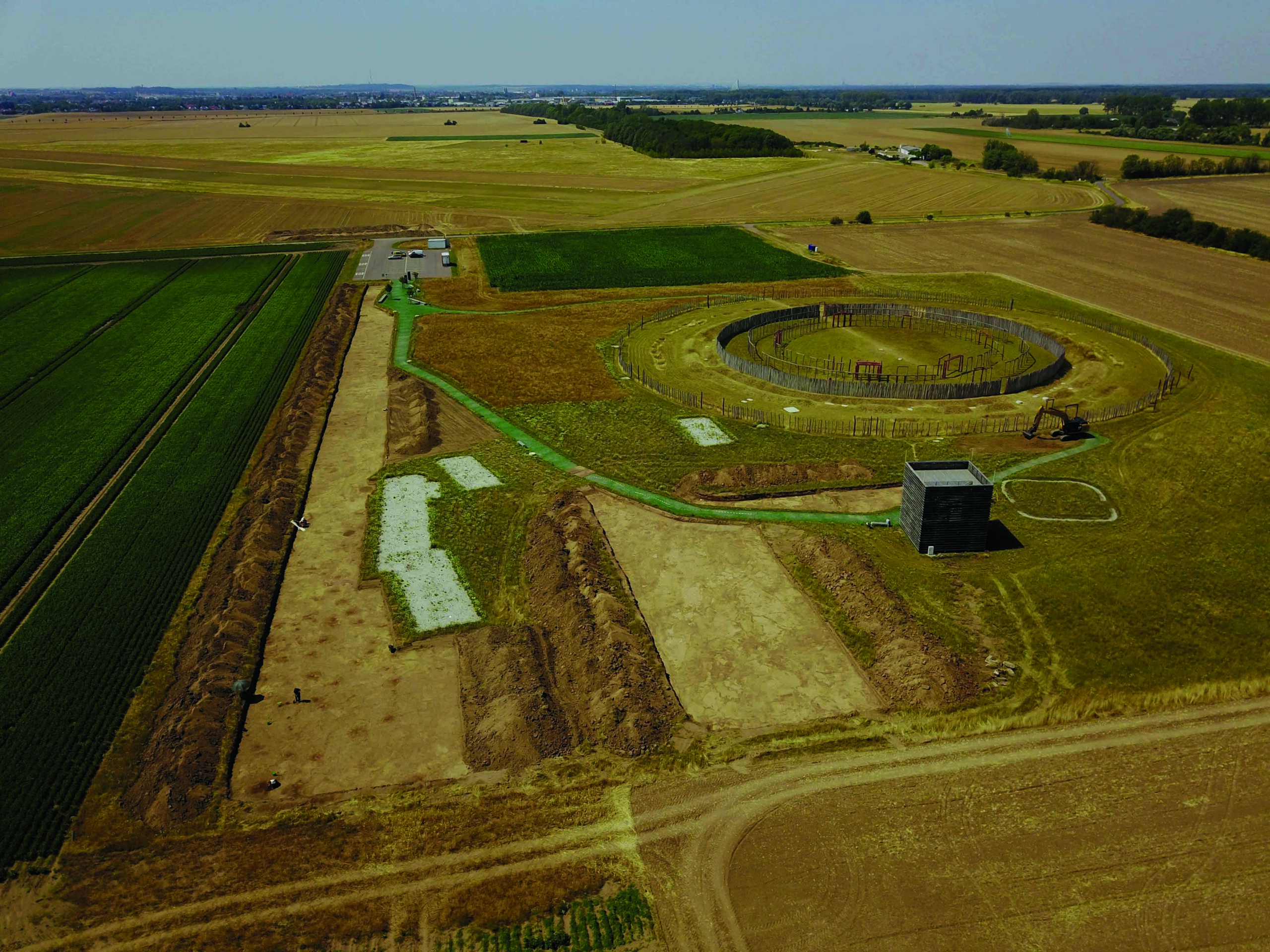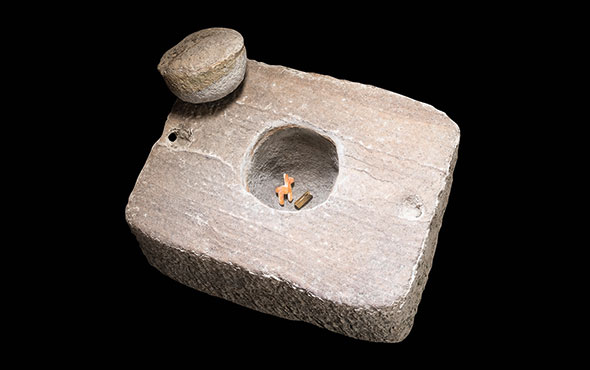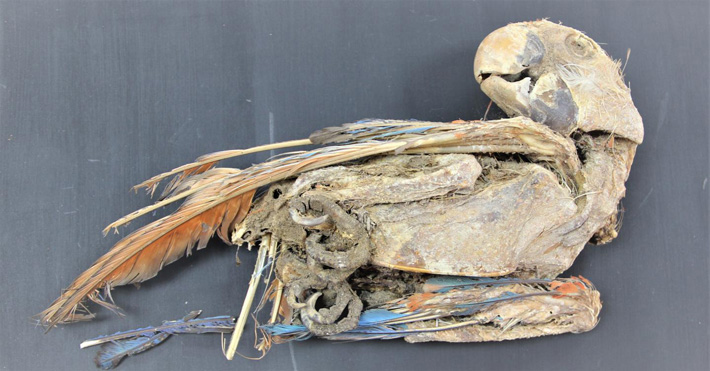
UNIVERSITY PARK, PENNSYLVANIA—According to a statement released by Penn State University, archaeologist José M. Capriles and his colleagues analyzed the remains of 27 scarlet macaws, Amazon parrots, and other parrot species recovered from five different sites in northern Chile’s Atacama Desert. Capriles explained that between A.D. 1100 and 1450, live birds were probably transported on llamas through cold weather and across the Andes Mountains and other difficult terrain to reach the Atacama, where they were highly prized for their feathers. Chemical analysis indicates that the birds ate the same diet as the people who imported them. Their feathers were plucked as soon as they grew in, he added. Parrot feathers have been found in burials, and secured in leather boxes and other protective materials. After death, many of the birds were eviscerated and mummified in poses with their beaks open and tongues sticking out, or with their wings spread. Sometimes the mummified parrots were wrapped in textiles or placed in bags, which helped to preserve them. To read about macaws raised for their plumage by Ancestral Puebloans, go to "Angry Birds."




